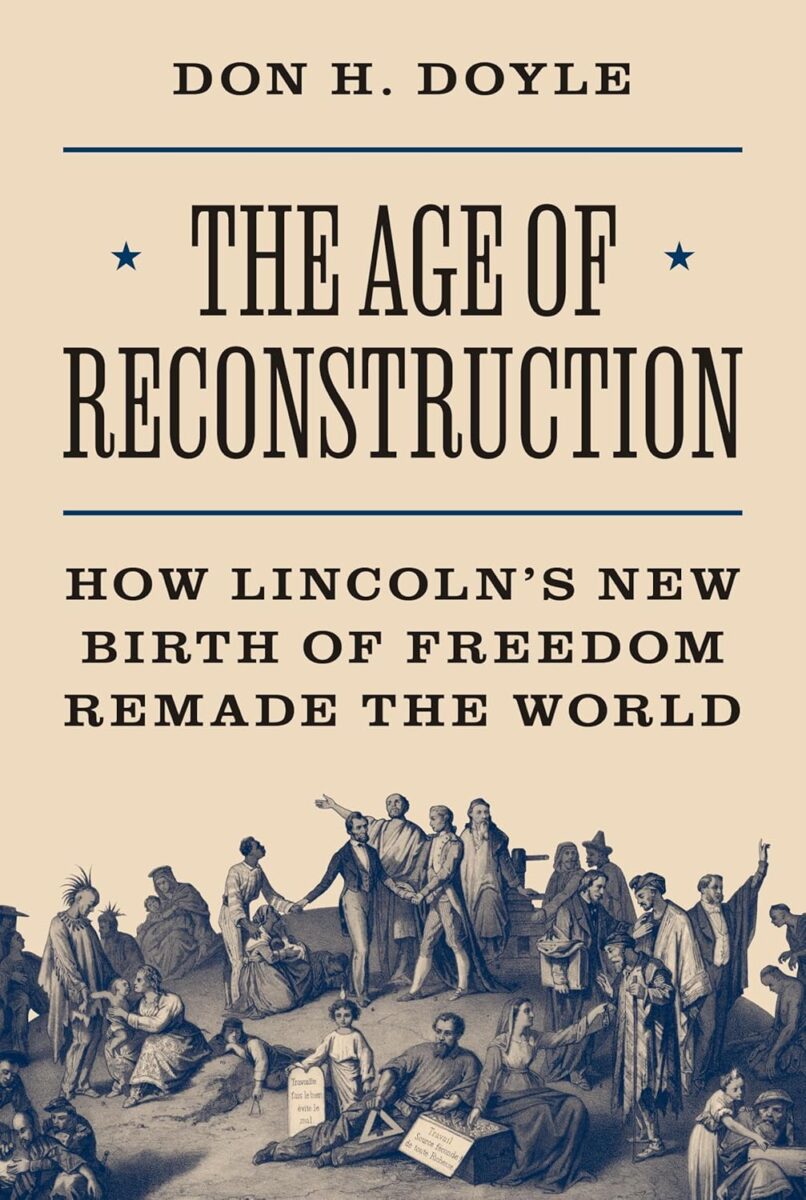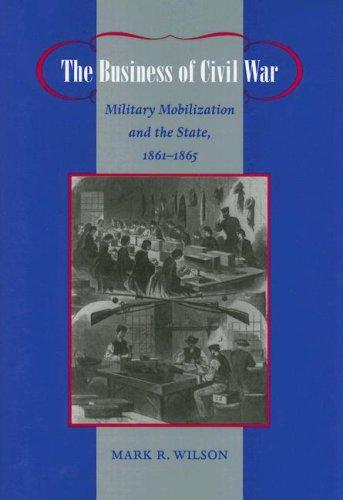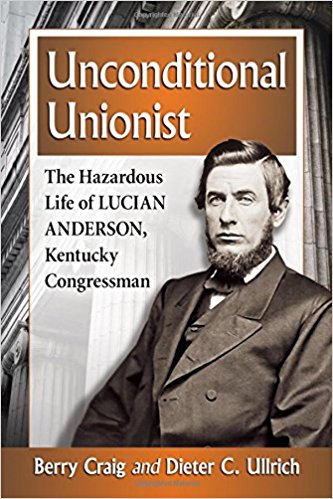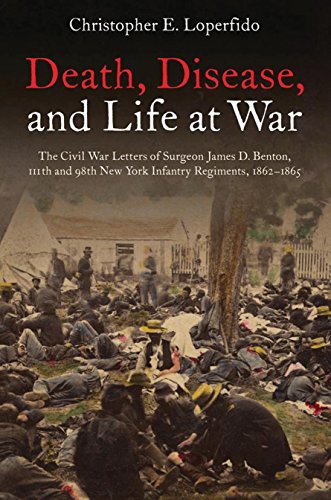The Age of Reconstruction examines what Reconstruction meant in and beyond the Americas. As author Don H. Doyle observes, Reconstruction tends to remain a story bound by national borders, although some scholars (including myself) have begun to consider the international dimensions of the era. Doyle’s history ranges throughout the Atlantic World and takes readers “outside the familiar national boundaries to Mexico, Alaska, Canada, and Cuba, and across the Atlantic to Britain, Spain, France, and Rome” (3). This deeply researched and eminently readable international history foregrounds “interconnections between nations and the pervasive transnational influence of ideas, famous heroes, models of government, reform, and revolution” (3).
Doyle posits the existence of two Reconstructions: one domestic and one international. Domestic Reconstruction, the author argues, “aimed at pacifying the South, abolishing slavery, dethroning the slaveholding aristocracy, and rebuilding the South on a firm republican foundation” (7). By contrast, International Reconstruction has received far less attention. In the Americas, International Reconstruction “sought to ensure national security by ridding the Americas of predatory European empires and creating a zone of friendly, independent, ideally republican nations” (7). In Europe, International Reconstruction spurred momentous, if not always long-lasting, changes in the countries under examination. Doyle joins a growing body of scholars in illuminating a broader Age of Revolutions “that encompassed the Americas and Europe for a century between the 1770s and the 1870s” (10).
The response to Lincoln’s assassination “signaled a reveille that awakened people across the Atlantic world to the possibility of a new era for world democracy” (16). When John Wilkes Booth decided to kill the president, he did not think about what Lincoln’s death might mean for the people in the U.S. as well as in the rest of the world. As Michael Burlingame and other scholars have demonstrated, the assassin wanted to punish Lincoln for, among other things, advocating Black suffrage. Instead, when he shot the president, the assassin helped to ignite European reform movements. Doyle skillfully analyzes the outpouring of grief for Lincoln throughout the world. John Bigelow and Secretary of State William H. Seward recognized the power of the tributes to Lincoln that poured in from all corners of the globe and quickly had them published. From that point on, European leaders “could read in Tributes of the Nations testimonies from their people, what they thought about Lincoln, America—and what they thought about their own country’s leaders and governments. They would soon realize that the demonstrations for Lincoln and America were symptoms of a more profound unrest about to rise” (41).
As in his previous book The Cause of All Nations, Doyle adopts a broad lens and moves gracefully throughout the Atlantic World. He notes, as have other scholars, the struggles that raged simultaneously in the U.S. and in Mexico during the 1860s. Seward saw the relationship between the French Intervention in Mexico and the U.S. Civil War differently than generals such as Ulysses S. Grant and Philip Sheridan. Doyle analyzes different approaches and strategies that various actors in the U.S. either took or entertained when it came to helping Mexico. In the end, Napoleon III’s New World machinations failed, Maximilian met his maker before a Mexican firing squad, and both the U.S. and Mexico survived vicious internal conflicts and “stood as testament to the Pan-American commitment to independent republics in solidarity against European imperialists” (98).
Shortly after the French left Mexico, the Russians agreed to sell Alaska. Acquisition of this territory by the United States, Doyle comments, “was part of a grand geopolitical chess game in the spring of 1867 with France and Russia taking leave of North America and Britain pulling back” (116). In addition, it was during this period that Canada emerged. Doyle cautions readers that “the making of Canada was a top-down affair and not the culmination of some revolutionary nationalist movement designed to throw off the yoke of British rule and proclaim independence” (122). If anything, antipathy toward the U.S. drove the leaders of the confederation movement.
The situation proved more complex in Cuba. Doyle notes, as have other scholars, the accounts of enslaved Cubans chanting that Lincoln was their hope. However, where Britian, France, and Russia retreated from the Americas in the 1860s, Spain refused to leave for another generation. Including Cuba and Spain provides an interesting wrinkle in Doyle’s account of republican fervor in the Americas. Throughout this volume, Doyle commends Seward for pursuing what one might call a foreign policy of freedom. Seward’s successor, Hamilton Fish, did not exert the same degree of effort. Indeed, Doyle argues, if Fish’s Cuban policy had been “more inspired by the ideals of anti-imperialism and Pan-American republicanism, willing or not, Spain might have joined the parade of empires retreating from the Western Hemisphere in the 1860s” (172). When Cuban independence finally came, it occurred under radically different conditions than what many people envisioned in the 1860s.
The withdrawal of most European powers from the Americas did not occur in a vacuum. Rather, it “coincided with the contagious flurry of democratic reforms, revolutions, and emancipation movements that spread across the Atlantic” (177). Doyle guides readers through the complexities of democratic upheavals in Britain, Spain, France, and Italy, which were all “in varying degrees, connected to the United States and the impact of the Civil War and Reconstruction” (176). In other words, the U.S. helped to influence how many European reformers envisioned the future. In Great Britain, after much ferment and debate, Parliament passed the Reform Act of 1867. The U.S., “first as an example of democratic failure for conservatives and then as a model of democratic success for reformers, played a significant role in the debate” (200-201). Spain’s Glorious Revolution was also part of “the contagious wave of democratic upheavals that spread across the Atlantic world in the wake of the Union’s victory in 1865” (203). Sadly, like Cuba, revolution in Spain also failed. The collapse of the Second Empire in France and the Paris Commune “marked the end of the century-long Age of Revolution” (231). Doyle contends that the U.S. Civil War “played a vital role in galvanizing the French opposition to the Second Empire” (233). Ultimately, the U.S. and others grew deeply disturbed about the revolutionary violence of the Paris Commune. “The reveille of democracy in Europe,” Doyle concludes in the book’s final chapter, “had no more formidable opponent than Pope Pius IX” (263). In 1867, the U.S. cut diplomatic relations with Papal Rome and, Doyle notes, “it was as though the American government was anticipating the fall of Rome to the Risorgimento by withdrawing recognition of what it considered a relic of medieval times” (273). The fall of Papal Rome to the Risorgimento was cause for celebration for many throughout the Atlantic World.
Doyle’s coda, “The Undoing,” discusses the sabotage of Reconstruction in the U.S. and the mixed record and eventual abandonment of International Reconstruction abroad. Whether this anticipates the subject of his next book remains to be seen, but, if so, it would be the final entry in a fascinating trilogy about some of the international dimensions of the U.S. Civil War Era.
There is much to appreciate and enjoy about The Age of Reconstruction. Doyle is an engaging writer, the depth of the research is impressive, and his arguments merit serious consideration. Analysis of International Reconstruction is ongoing. One hopes that other scholars will take the story in other parts of the world to discover what Reconstruction meant to the broader world and how that world, in turn, shaped Reconstruction. Though they might not agree with all of Doyle’s conclusions and arguments, all scholars of the U.S. Civil War era need to read this book.
Evan C. Rothera is an Assistant Professor of History at Sam Houston State University.





